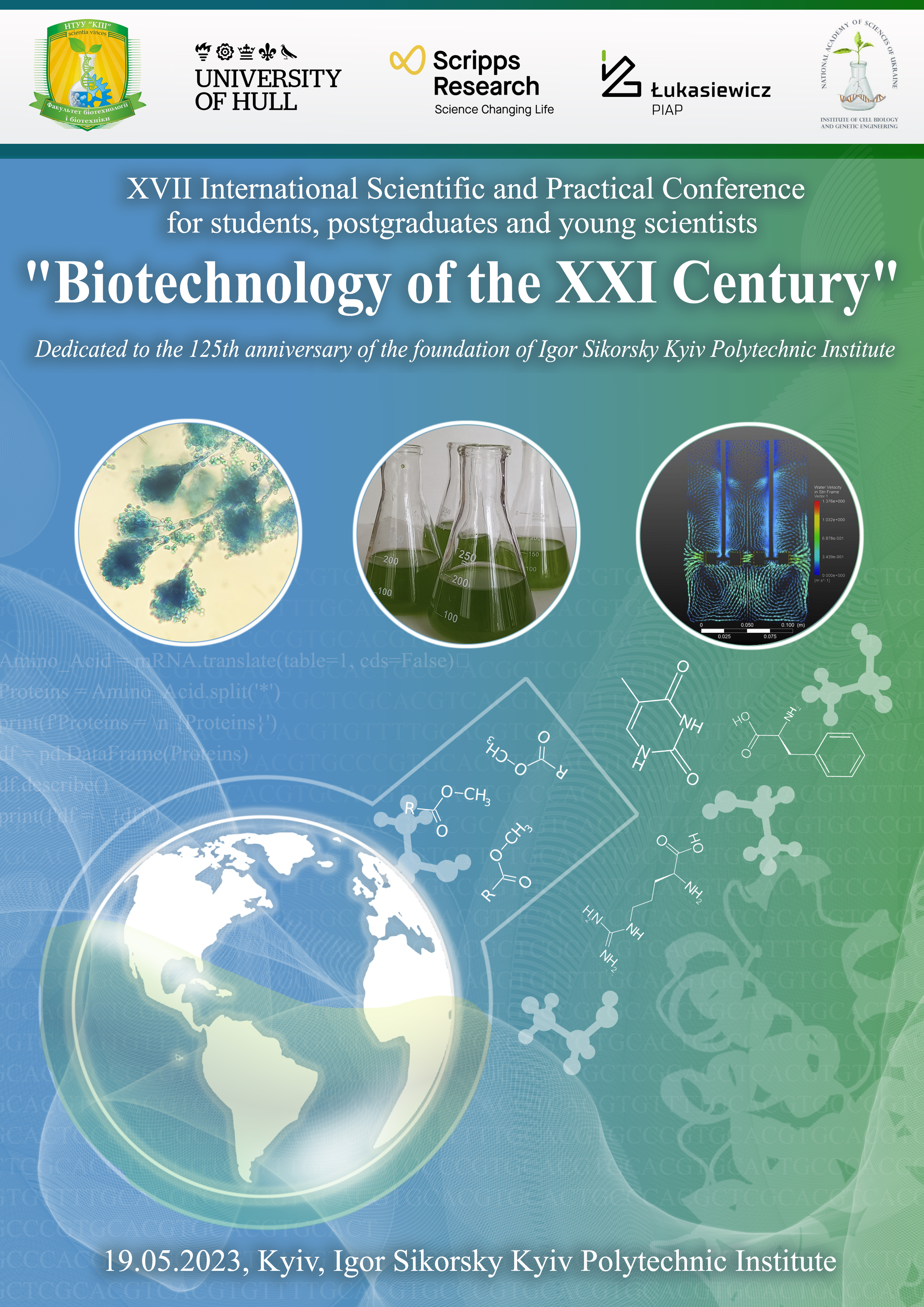ОТРИМАННЯ ЛІКУВАЛЬНИХ ПРЕПАРАТІВ НА ОСНОВІ СТОВБУРОВИХ КЛІТИН ДЛЯ ЛІКУВАННЯ ЛЕЙКОЗУ: МОЖЛИВОСТІ ТА ПЕРСПЕКТИВИ
Анотація
Лейкоз, або рак крові, є одним з найбільш поширених видів онкологічних захворювань, що стосується гематологічної системи людини. У світі щорічно діагностують понад 400 000 нових випадків лейкозу, при цьому кількість хворих збільшується в року в рік. Для багатьох пацієнтів лейкоз є смертельною хворобою, яка потребує негайного та ефективного лікування. Використання стовбурових клітин для лікування лейкозу має значний потенціал, оскільки вони можуть замінити пошкоджені клітини крові та відновити гемопоез. За даними клінічних досліджень, лікування лейкозу за допомогою стовбурових клітин вже дало деякі перспективні результати, зокрема вдвічі зменшило ризик повторного виникнення лейкозу після трансплантації кісткового мозку у дітей з акутною лімфобластною лейкемією. Таким чином, використання стовбурових клітин для лікування лейкозу є одним з найбільш перспективних напрямків розвитку медицини та може значно зменшити кількість смертей від цієї хвороби.
Посилання
Meng G., Liu S., Li X., Krawetz R., Rancourt D. E. Derivation of human embryonic stem cell lines after blastocyst microsurgery. Biochemistry and Cell Biology. 2010;88(3):479–490. doi: 10.1139/O09-188.
Strom S., Inzunza J., Grinnemo K. H., et al. Mechanical isolation of the inner cell mass is effective in derivation of new human embryonic stem cell lines. Human Reproduction. 2007;22(12):3051–3058. doi: 10.1093/humrep/dem335.
Tanaka N., Takeuchi T., Neri Q. V., Sills E. S., Palermo G. D. Laser-assisted blastocyst dissection and subsequent cultivation of embryonic stem cells in a serum/cell free culture system: applications and preliminary results in a murine model. Journal of Translational Medicine. 2006;4(1):p. 20. doi: 10.1186/1479-5876-4-20.
Turetsky T., Aizenman E., Gil Y., et al. Laser-assisted derivation of human embryonic stem cell lines from IVF embryos after preimplantation genetic diagnosis. Human Reproduction. 2008;23(1):46–53. doi: 10.1093/humrep/dem351
Morgan M. Stanton, Evangeline Tzatzalos, Matthew Donne, Nikola Kolundzic, Ingvar Helgason, Dusko Ilic, Prospects for the Use of Induced Pluripotent Stem Cells in Animal Conservation and Environmental Protection, Stem Cells Translational Medicine, Volume 8, Issue 1, January 2019, Pages 7–13, https://doi.org/10.1002/sctm.18-0047
Xiao N. Application of Bone Marrow Stem Cell-Based Therapy in Bone Loss Diseases. Curr Pharm Des. 2017;23(41):6288-6297. doi: 10.2174/1381612823666170601113348. PMID: 28571551.
MD L. A. C. Stem Cell Therapy: A Comprehensive Overview (2023). DVC Stem | Advanced Stem Cell Therapy Clinic. URL: https://www.dvcstem.com/post/stem-cell-therapy.
Markman M. Leukemia Stem Cell Transplantation: Options & More. Cancer Treatment Centers of America. URL: https://www.cancercenter.com/cancer-types/leukemia/treatments/stem-cell-transplantation.
Dessie G, Derbew Molla M, Shibabaw T, Ayelign B. Role of Stem-Cell Transplantation in Leukemia Treatment. Stem Cells Cloning. 2020 Aug 10;13:67-77. doi: 10.2147/SCCAA.S262880. PMID: 32982314; PMCID: PMC7493021.
Munoz, J., Shah, N., Rezvani, K., & Hosing, C. (2018). Concise Review: Cord Blood Transplantation: Past, Present, and Future. Stem cells translational medicine, 7(9), 651-657.
Craddock, C., & Nakamoto, B. (2017). Transplantation of hematopoietic stem cells from alternative donors. Hematology, Am Soc Hematol Educ Program, 2017(1), 358-365.
Koreth, J., & Antin, J. H. (2017). The role of stem-cell transplantation in the treatment of acute leukemia. The Lancet Oncology, 18(9), e498-e512.
Brentjens, R.J., Davila, M.L., Riviere, I., Park, J., Wang, X., Cowell, L.G., Bartido, S., Stefanski, J., Taylor, C., Olszewska, M., Borquez-Ojeda, O., Qu, J., Wasielewska, T., He, Q., Bernal, Y., Rijo, I.V., Hedvat, C., Kobos, R., Curran, K., Steinherz, P., Jurcic, J., Rosenblat, T., Maslak, P., Frattini, M., Sadelain, M. (2013). CD19-targeted T cells rapidly induce molecular remissions in adults with chemotherapy-refractory acute lymphoblastic leukemia. Science Translational Medicine, 5(177), 177ra38. doi: 10.1126/scitranslmed.3005930

